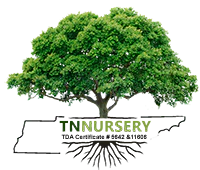Fruiting Apple Trees
Fruiting apple trees, scientifically known as Malus domestica, are among the most popular and widely cultivated fruit trees worldwide. These deciduous trees are renowned for their delicious and versatile fruits, which come in various flavors, colors, and textures. Here, we'll explore some key aspects of fruiting apple trees.
They Are Very Hardy
Varieties: The trees boast various cultivars, each with unique characteristics. Some popular apple varieties include Granny Smith, Fuji, Gala, Red Delicious, and Honeycrisp. These cultivars differ in taste, appearance, and preferred growing conditions.
Growth Habit: They typically range from 10 to 30 feet in height, with a spreading canopy. They are known for their attractive blossoms in the spring, which vary from white to pink, depending on the variety.
Pollination: Most trees are not self-pollinating, meaning they require cross-pollination from another apple tree of a compatible variety to produce fruit. This is an important consideration when planting an orchard, as proper pollinators must be selected.
Cultivation Of The Tree
The trees thrive in well-drained soil with adequate sunlight. They are grown in temperate climates and require a chilling period during the winter to set fruit properly. Pruning is important for shaping the tree, promoting airflow, and increasing fruit production.
Harvesting: They typically produce fruit in late summer to autumn. Harvesting should be done when the fruit reaches its desired ripeness, as they do not continue to ripen after being picked. The fruit is usually hand-picked, being careful not to damage the delicate fruit.
Culinary Uses: The fruit is versatile and can be eaten fresh, used in baking, juiced, or turned into various preserves, sauces, and cider. They are full of fiber, vitamins, and antioxidants, making them a healthy addition to any diet.
Fruiting apple trees is a source of delicious and nutritious fruit and a beautiful addition to gardens and orchards. Their cultivation requires care and attention, but the rewards of enjoying homegrown fruit are well worth the effort. Whether you're a backyard gardener or a commercial orchardist, the trees offer a fruitful and satisfying experience.
Buy Fruiting Apple Trees At Garden Plants Nursery
















































